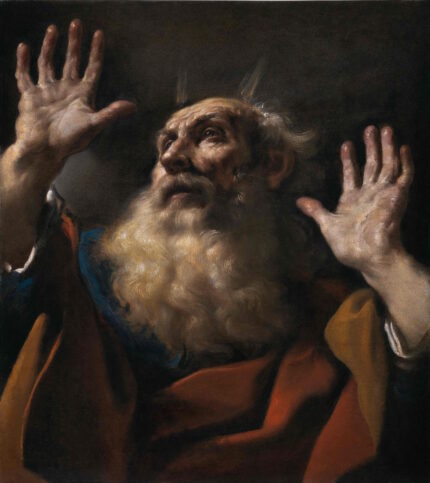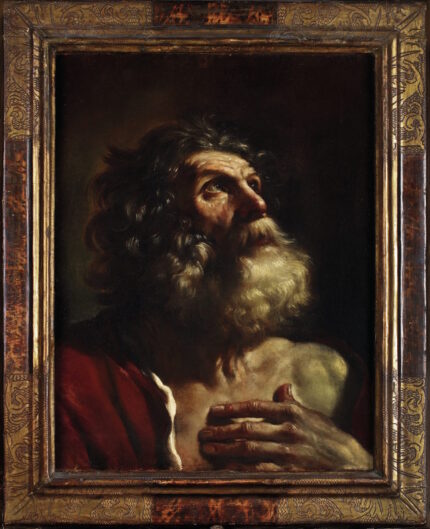
The painting was rediscovered in November 2022 when it came up for auction in Paris attributed to a nameless painter of the Bologna school. The auction house’s experts hypothesized it may have been the work of a student of Guido Reni’s. Guercino was another possibility, based on comparisons with a known work of his, Head of an Old Man, at the Ashmolean Museum in Oxford that has a very similar composition: an old man with a cottony white beard looking up, his face bathed in light. There was also a copy of the same Moses by a pupil of Guercino’s, Bendetto Zalone, that sold at auction in 2001.

In September 2023, Moses re-emerged at the Moretti Fine Art gallery. It turned out that Fabrizio Moretti, owner of the gallery and Old Master expert, was the mystery buyer. He rolled the dice happily, believing at first glance that Moses was an authentic Guercino. In the ten months since the auction, the painting was professionally cleaned and thoroughly researched to establish its provenance. Experts Letizia Treves, formerly of London’s National Gallery, and Keith Christiansen, formerly of the Metropolitan Museum of Art, conclusively attributed the painting to the Baroque master.
Moses is a masterpiece of Guercino’s Prima Maniera – used to describe the paintings he produced in Cento outside Bologna before a sojourn to Rome in 1621-23 – and is datable to about 1618-19, a time in which the young Guercino was greatly in demand producing altarpieces for churches in Cento as well as easel paintings for an ever-growing private clientele. The light, fluid and painterly touch in Guercino’s Moses may be compared to that in his King David, datable to a year or two earlier (c. 1617-18, Musée des Beaux-Arts, Rouen) and the Head of an Old Man (c. 1619-20, Ashmolean Museum, Oxford), which shares Moses’s tightly cropped bust-length format. Guercino appears to have used the same model for the painting as the figure of Elijah in Elijah Fed by Ravens (1620, National Gallery, London), likely using a tracing or cartoon of Moses’s head for the figure of Elijah, reversing it in the process and turning it slightly.
Moses is first recorded in 1624, in the eminent collection of cardinal Alessandro d’Este (1568–1624) in Rome, a patron of Guercino who almost certainly knew him during the period the painter resided in the city 1621–23. Although this period post-dates the execution of Moses, Guercino may have sold or given the painting to the cardinal to strengthen ties with him and his family. Indeed, from 1630 for a period spanning two decades, Guercino enjoyed the patronage and support of the Este in the form of the Duke Francesco I d’Este (1610–1658), the cardinal’s nephew. Following the death of cardinal Alessandro d’Este, the painting entered the renowned Este ducal collections in Modena and remained there until the Napoleonic era, whereupon it was taken to France during the Napoleonic occupation of the Duchy of Modena (1796–97) and all trace of the painting was lost. Prior to its rediscovery, Guercino’s Moses was known through seventeenth-century painted copies, a drawing and engravings, all of which attest to the work’s art historical significance.
The painting, restored to its former brilliance and to its identity, was displayed at Moretti Fine Art’s Paris gallery with a new price tag of €2 million ($2.2 million). The Jacob Rothschild Foundation snapped it up so Moses can keep King David company in the exceptional art collection at Waddesdon Manor, the palatial estate purpose-built by Baron Ferdinand de Rothschild in the late 19th century to house his art collection.
* This article was originally published here








No comments:
Post a Comment